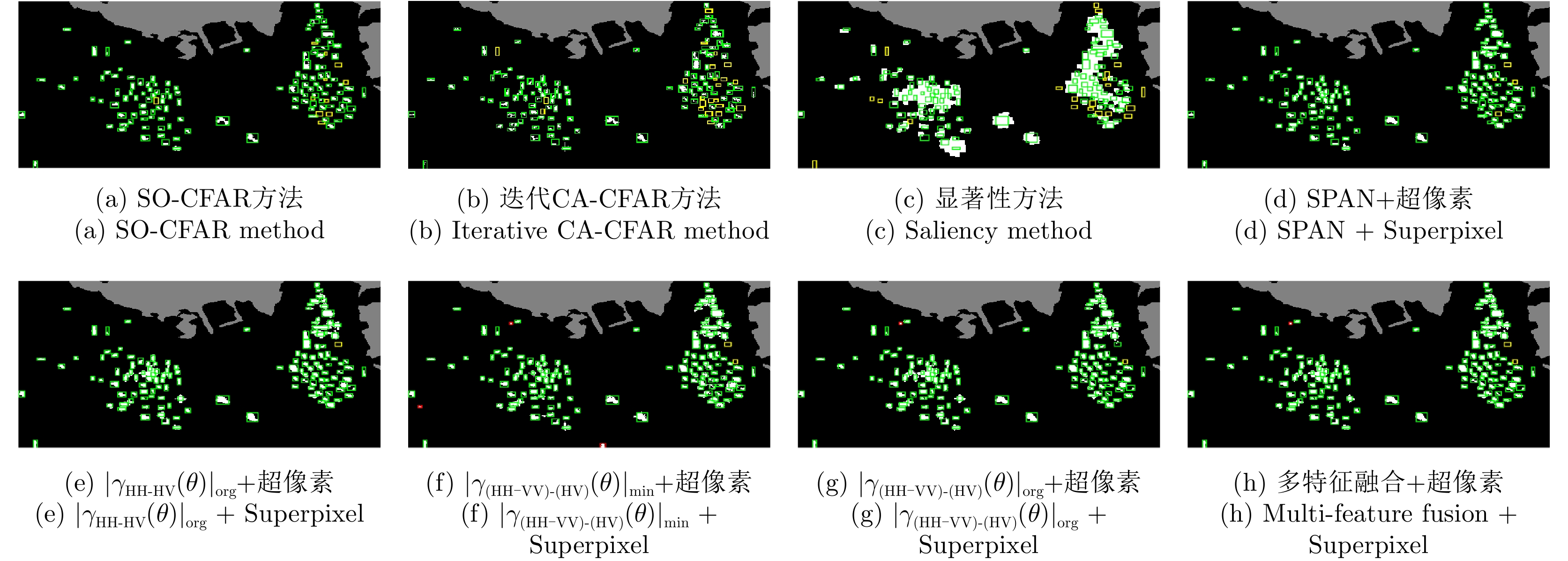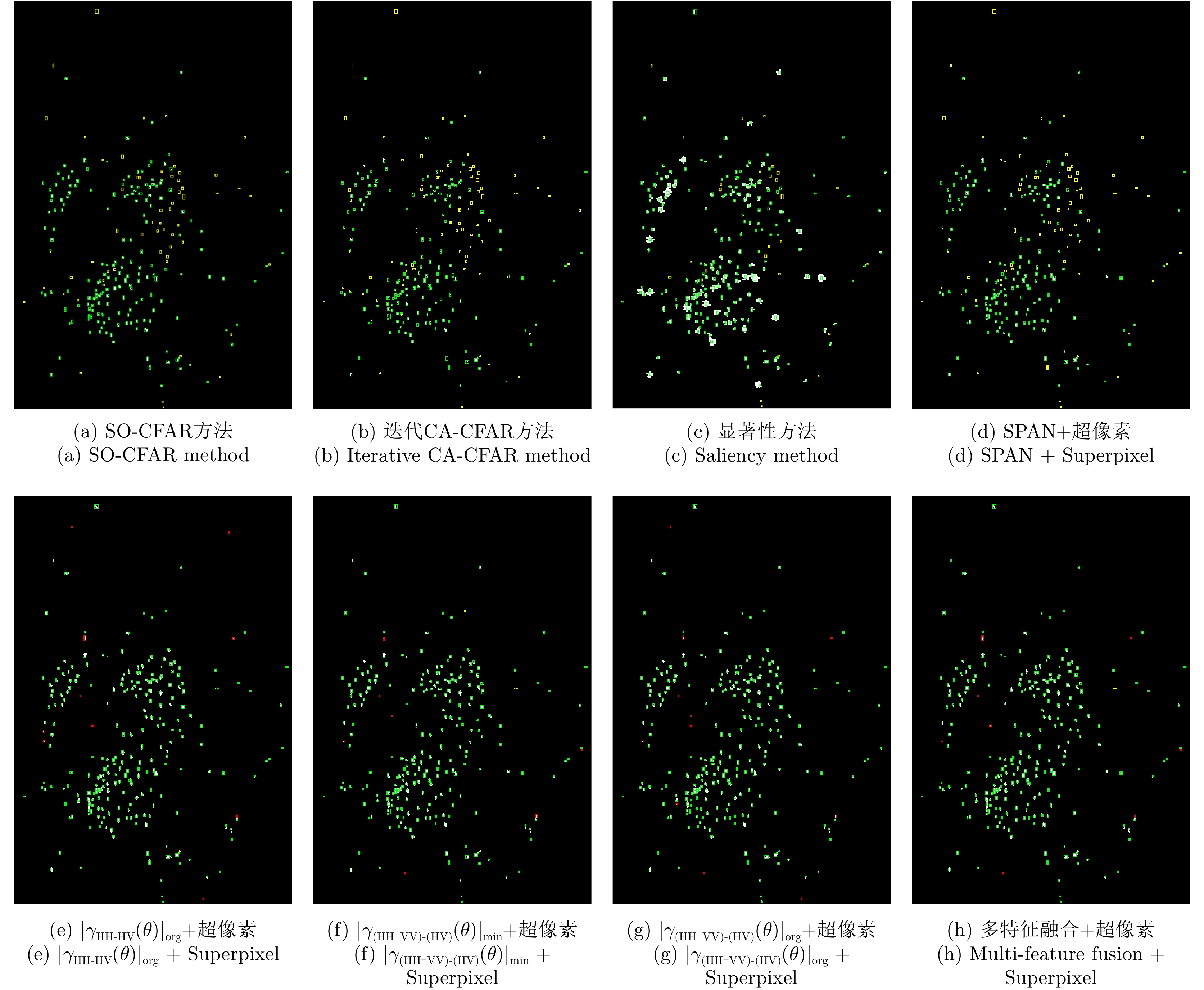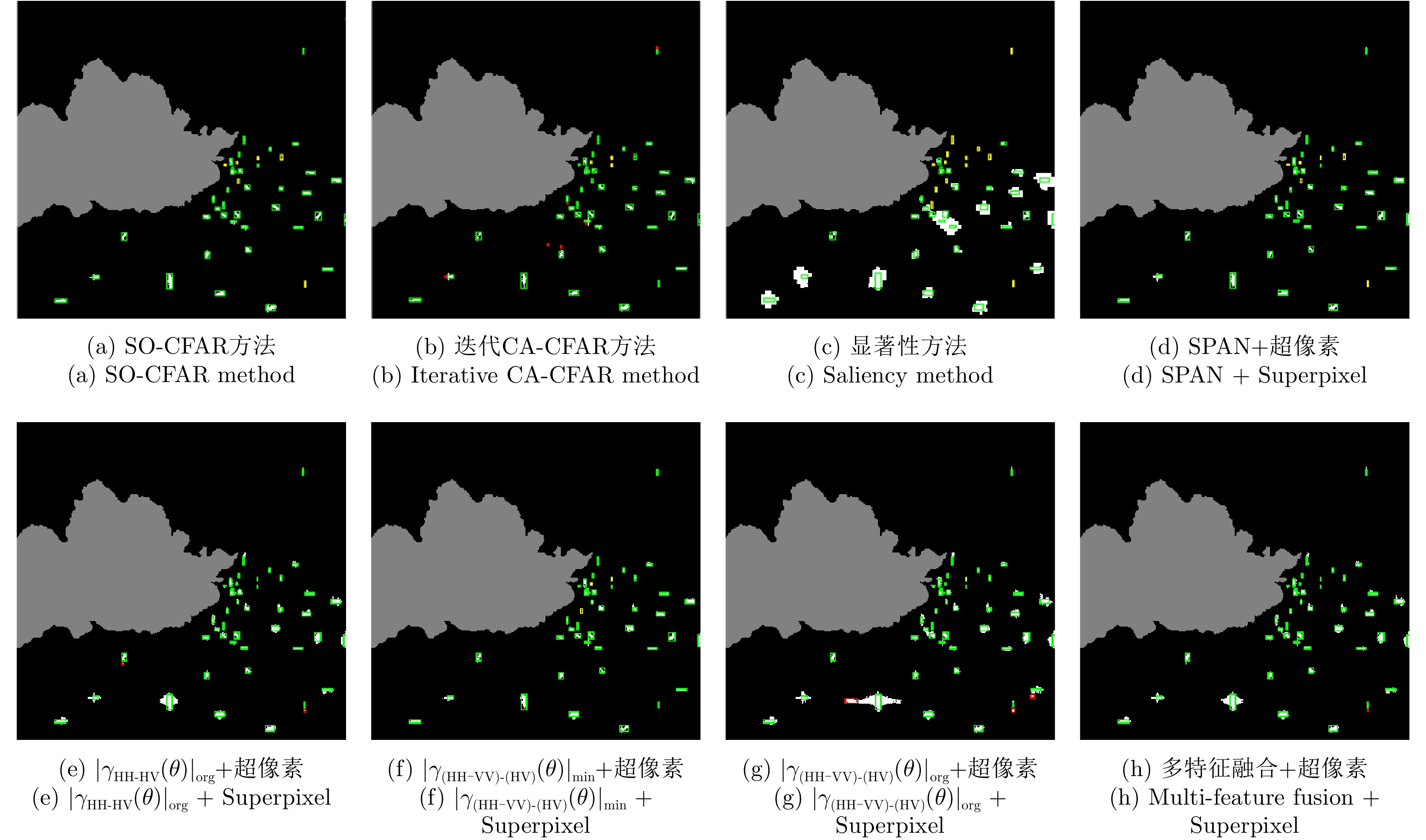| [1] |
王雪松, 陈思伟. 合成孔径雷达极化成像解译识别技术的进展与展望[J]. 雷达学报, 2020, 9(2): 259–276. doi: 10.12000/JR19109WANG Xuesong and CHEN Siwei. Polarimetric synthetic aperture radar interpretation and recognition: Advances and perspectives[J]. Journal of Radars, 2020, 9(2): 259–276. doi: 10.12000/JR19109 |
| [2] |
杜兰, 王兆成, 王燕, 等. 复杂场景下单通道SAR目标检测及鉴别研究进展综述[J]. 雷达学报, 2020, 9(1): 34–54. doi: 10.12000/JR19104DU Lan, WANG Zhaocheng, WANG Yan, et al. Survey of research progress on target detection and discrimination of single-channel SAR images for complex scenes[J]. Journal of Radars, 2020, 9(1): 34–54. doi: 10.12000/JR19104 |
| [3] |
张杰, 张晰, 范陈清, 等. 极化SAR在海洋探测中的应用与探讨[J]. 雷达学报, 2016, 5(6): 596–606. doi: 10.12000/JR16124ZHANG Jie, ZHANG Xi, FAN Chenqing, et al. Discussion on application of polarimetric synthetic aperture radar in marine surveillance[J]. Journal of Radars, 2016, 5(6): 596–606. doi: 10.12000/JR16124 |
| [4] |
LENG Xiangguang, JI Kefeng, ZHOU Shilin, et al. Fast shape parameter estimation of the complex generalized gaussian distribution in SAR images[J]. IEEE Geoscience and Remote Sensing Letters, 2020, 17(11): 1933–1937. doi: 10.1109/LGRS.2019.2960095 |
| [5] |
艾加秋, 齐向阳, 禹卫东. 改进的SAR图像双参数CFAR舰船检测算法[J]. 电子与信息学报, 2009, 31(12): 2881–2885.
AI Jiaqiu, QI Xiangyang, and YU Weidong. Improved two parameter CFAR ship detection algorithm in SAR images[J]. Journal of Electronics &Information Technology, 2009, 31(12): 2881–2885.
|
| [6] |
GAO Gui, LI Gaosheng, and LI Yipeng. Shape parameter estimator of the generalized gaussian distribution based on the MoLC[J]. IEEE Geoscience and Remote Sensing Letters, 2018, 15(3): 350–354. doi: 10.1109/LGRS.2017.2787558 |
| [7] |
LI Mingdian, CUI Xingchao, and CHEN Siwei. An adaptive superpixel-level detection method for ship target in SAR image[J]. IEEE Geoscience and Remote Sensing Letters, 2020, in press.
|
| [8] |
LENG Xiangguang, JI Kefeng, XING Xiangwei, et al. Area ratio invariant feature group for ship detection in SAR imagery[J]. IEEE Journal of Selected Topics in Applied Earth Observations and Remote Sensing, 2018, 11(7): 2376–2388. doi: 10.1109/JSTARS.2018.2820078 |
| [9] |
LENG Xiangguang, JI Kefeng, YANG Kai, et al. A bilateral CFAR algorithm for ship detection in SAR images[J]. IEEE Geoscience and Remote Sensing Letters, 2015, 12(7): 1536–1540. doi: 10.1109/LGRS.2015.2412174 |
| [10] |
RENGA A, GRAZIANO M D, and MOCCIA A. Segmentation of marine SAR images by sublook analysis and application to sea traffic monitoring[J]. IEEE Transactions on Geoscience and Remote Sensing, 2019, 57(3): 1463–1477. doi: 10.1109/TGRS.2018.2866934 |
| [11] |
ACHANTA R, SHAJI A, SMITH K, et al. SLIC superpixels compared to state-of-the-art superpixel methods[J]. IEEE Transactions on Pattern Analysis and Machine Intelligence, 2012, 34(11): 2274–2282. doi: 10.1109/TPAMI.2012.120 |
| [12] |
ZHAI Liang, LI Yu, and SU Yi. Inshore ship detection via saliency and context information in high-resolution SAR images[J]. IEEE Geoscience and Remote Sensing Letters, 2016, 13(12): 1870–1874. doi: 10.1109/LGRS.2016.2616187 |
| [13] |
LI Tao, LIU Zheng, XIE Rong, et al. An improved superpixel-level CFAR detection method for ship targets in high-resolution SAR images[J]. IEEE Journal of Selected Topics in Applied Earth Observations and Remote Sensing, 2018, 11(1): 184–194. doi: 10.1109/JSTARS.2017.2764506 |
| [14] |
OUCHI K, TAMAKI S, YAGUCHI H, et al. Ship detection based on coherence images derived from cross correlation of multilook SAR images[J]. IEEE Geoscience and Remote Sensing Letters, 2004, 1(3): 184–187. doi: 10.1109/LGRS.2004.827462 |
| [15] |
TOUZI R, CHARBONNEAU F, HAWKINS R K, et al. Ship-sea contrast optimization when using polarimetric SARs[C]. IEEE 2001 International Geoscience and Remote Sensing Symposium, Sydney, Australia, 2001: 426–428.
|
| [16] |
WANG Xuesong. Status and prospects of radar polarimetry techniques[J]. Journal of Radars, 2016, 5(2): 119–131. doi: 10.12000/JR16039 |
| [17] |
YANG Jian, ZENG Liang, MA Wenting, et al. Recent advances on extraction of polarimetric scattering features of radar target[J]. Chinese Journal of Radio Science, 2019, 34(1): 12–18. doi: 10.13443/j.cjors.2018091501 |
| [18] |
WANG Yinghua and LIU Hongwei. PolSAR ship detection based on superpixel-level scattering mechanism distribution features[J]. IEEE Geoscience and Remote Sensing Letters, 2015, 12(8): 1780–1784. doi: 10.1109/LGRS.2015.2425873 |
| [19] |
HE Jinglu, WANG Yinghua, LIU Hongwei, et al. A novel automatic PolSAR ship detection method based on superpixel-level local information measurement[J]. IEEE Geoscience and Remote Sensing Letters, 2018, 15(3): 384–388. doi: 10.1109/LGRS.2017.2789204 |
| [20] |
CHEN Siwei, WANG Xuesong, XIAO Shunping, et al. General polarimetric model-based decomposition for coherency matrix[J]. IEEE Transactions on Geoscience and Remote Sensing, 2014, 52(3): 1843–1855. doi: 10.1109/TGRS.2013.2255615 |
| [21] |
YAMAGUCHI Y, SATO A, BOERNER W M, et al. Four-component scattering power decomposition with rotation of coherency matrix[J]. IEEE Transactions on Geoscience and Remote Sensing, 2011, 49(6): 2251–2258. doi: 10.1109/TGRS.2010.2099124 |
| [22] |
AN Wentao and LIN Mingsen. An incoherent decomposition algorithm based on polarimetric symmetry for multilook polarimetric SAR data[J]. IEEE Transactions on Geoscience and Remote Sensing, 2020, 58(4): 2383–2397. doi: 10.1109/TGRS.2019.2948683 |
| [23] |
CHEN Siwei, WANG Xuesong, LI Yongzhen, et al. Adaptive model-based polarimetric decomposition using PolInSAR coherence[J]. IEEE Transactions on Geoscience and Remote Sensing, 2014, 52(3): 1705–1718. doi: 10.1109/TGRS.2013.2253780 |
| [24] |
XI Yuyang, LANG Haitao, TAO Yunhong, et al. Four-component model-based decomposition for ship targets using PolSAR data[J]. Remote Sensing, 2017, 9(6): 621. doi: 10.3390/rs9060621 |
| [25] |
SUGIMOTO M, OUCHI K, and NAKAMURA Y. On the novel use of model-based decomposition in SAR polarimetry for target detection on the sea[J]. Remote Sensing Letters, 2013, 4(9): 843–852. doi: 10.1080/2150704X.2013.804220 |
| [26] |
CONRADSEN K, NIELSEN A A, SCHOU J, et al. A test statistic in the complex Wishart distribution and its application to change detection in polarimetric SAR data[J]. IEEE Transactions on Geoscience and Remote Sensing, 2003, 41(1): 4–19. doi: 10.1109/TGRS.2002.808066 |
| [27] |
WANG Haipeng, XU Feng, and CHEN Shanshan. Saliency detector for SAR images based on pattern recurrence[J]. IEEE Journal of Selected Topics in Applied Earth Observations and Remote Sensing, 2016, 9(7): 2891–2900. doi: 10.1109/JSTARS.2016.2521709 |
| [28] |
CUI Xingchao, SU Yi, and CHEN Siwei. A saliency detector for polarimetric SAR ship detection using similarity test[J]. IEEE Journal of Selected Topics in Applied Earth Observations and Remote Sensing, 2019, 12(9): 3423–3433. doi: 10.1109/JSTARS.2019.2925833 |
| [29] |
ZHANG Tao, YANG Zhen, and XIONG Huilin. PolSAR ship detection based on the polarimetric covariance difference matrix[J]. IEEE Journal of Selected Topics in Applied Earth Observations and Remote Sensing, 2017, 10(7): 3348–3359. doi: 10.1109/JSTARS.2017.2671904 |
| [30] |
ZHANG Tao, JI Jinsheng, LI Xiaofeng, et al. Ship detection from PolSAR imagery using the complete polarimetric covariance difference matrix[J]. IEEE Transactions on Geoscience and Remote Sensing, 2019, 57(5): 2824–2839. doi: 10.1109/TGRS.2018.2877821 |
| [31] |
NUNZIATA F, MIGLIACCIO M, and BROWN C E. Reflection symmetry for polarimetric observation of man-made metallic targets at sea[J]. IEEE Journal of Oceanic Engineering, 2012, 37(3): 384–394. doi: 10.1109/JOE.2012.2198931 |
| [32] |
VELOTTO D, NUNZIATA F, MIGLIACCIO M, et al. Dual-polarimetric TerraSAR-X SAR data for target at sea observation[J]. IEEE Geoscience and Remote Sensing Letters, 2013, 10(5): 1114–1118. doi: 10.1109/LGRS.2012.2231048 |
| [33] |
LIU Tao, YANG Ziyuan, YANG Jian, et al. CFAR ship detection methods using compact polarimetric SAR in a K-Wishart distribution[J]. IEEE Journal of Selected Topics in Applied Earth Observations and Remote Sensing, 2019, 12(10): 3737–3745. doi: 10.1109/JSTARS.2019.2923009 |
| [34] |
PAPPAS O, ACHIM A, and BULL D. Superpixel-level CFAR detectors for ship detection in SAR imagery[J]. IEEE Geoscience and Remote Sensing Letters, 2018, 15(9): 1397–1401. doi: 10.1109/LGRS.2018.2838263 |
| [35] |
GAO Gui. A parzen-window-kernel-based CFAR algorithm for ship detection in SAR images[J]. IEEE Geoscience and Remote Sensing Letters, 2011, 8(3): 557–561. doi: 10.1109/LGRS.2010.2090492 |
| [36] |
黄寅礼, 孙路, 郭亮, 等. 基于空间变迹滤波旁瓣抑制与有序统计恒虚警率的舰船检测算法[J]. 雷达学报, 2020, 9(2): 335–342. doi: 10.12000/JR19082HUANG Yinli, SUN Lu, GUO Liang, et al. Ship detection algorithm based on spatially variant apodization sidelobe suppression and order statistic-constant false alarm rate[J]. Journal of Radars, 2020, 9(2): 335–342. doi: 10.12000/JR19082 |
| [37] |
HANSEN V G and SAWYERS J H. Detectability loss due to "greatest of" selection in a cell-averaging CFAR[J]. IEEE Transactions on Aerospace and Electronic Systems, 1980, AES-16(1): 115–118. doi: 10.1109/TAES.1980.308885 |
| [38] |
TRUNK G V. Range resolution of targets using automatic detectors[J]. IEEE Transactions on Aerospace and Electronic Systems, 1978, AES-14(5): 750–755. doi: 10.1109/TAES.1978.308625 |
| [39] |
GAO Gui, LIU Li, ZHAO Lingjun, et al. An adaptive and fast CFAR algorithm based on automatic censoring for target detection in high-resolution SAR images[J]. IEEE Transactions on Geoscience and Remote Sensing, 2009, 47(6): 1685–1697. doi: 10.1109/TGRS.2008.2006504 |
| [40] |
CUI Yi, ZHOU Guangyi, YANG Jian, et al. Yamaguchi. On the iterative censoring for target detection in SAR images[J]. IEEE Geoscience and Remote Sensing Letters, 2011, 8(4): 641–645. doi: 10.1109/LGRS.2010.2098434 |
| [41] |
AN Wentao, XIE Chunhua, and YUAN Xinzhe. An improved iterative censoring scheme for CFAR ship detection with SAR imagery[J]. IEEE Transactions on Geoscience and Remote Sensing, 2014, 52(8): 4585–4595. doi: 10.1109/TGRS.2013.2282820 |
| [42] |
CHEN Xiang, SUN Jun, YIN Kuiying, et al. An algorithm of ship target detection in SAR images based on cascaded CFAR[J]. Modern Radar, 2012, 34(9): 50–54, 58. doi: 10.3969/j.issn.1004-7859.2012.09.011 |
| [43] |
IERVOLINO P and GUIDA R. A novel ship detector based on the generalized-likelihood ratio test for SAR imagery[J]. IEEE Journal of Selected Topics in Applied Earth Observations and Remote Sensing, 2017, 10(8): 3616–3630. doi: 10.1109/JSTARS.2017.2692820 |
| [44] |
GAO Gui and SHI Gongtao. CFAR ship detection in nonhomogeneous sea clutter using polarimetric SAR data based on the notch filter[J]. IEEE Transactions on Geoscience and Remote Sensing, 2017, 55(8): 4811–4824. doi: 10.1109/TGRS.2017.2701813 |
| [45] |
MARINO A. A notch filter for ship detection with polarimetric SAR data[J]. IEEE Journal of Selected Topics in Applied Earth Observations and Remote Sensing, 2013, 6(3): 1219–1232. doi: 10.1109/JSTARS.2013.2247741 |
| [46] |
MARINO A and HAJNSEK I. Statistical tests for a ship detector based on the polarimetric notch filter[J]. IEEE Transactions on Geoscience and Remote Sensing, 2015, 53(8): 4578–4595. doi: 10.1109/TGRS.2015.2402312 |
| [47] |
GAO Gui and SHI Gongtao. Ship detection in dual-channel ATI-SAR based on the notch filter[J]. IEEE Transactions on Geoscience and Remote Sensing, 2017, 55(8): 4795–4810. doi: 10.1109/TGRS.2017.2701810 |
| [48] |
LIN Zhao, JI Kefeng, LENG Xiangguang, et al. Squeeze and excitation rank faster R-CNN for ship detection in SAR images[J]. IEEE Geoscience and Remote Sensing Letters, 2019, 16(5): 751–755. doi: 10.1109/LGRS.2018.2882551 |
| [49] |
CUI Zongyong, LI Qi, CAO Zongjie, et al. Dense attention pyramid networks for multi-scale ship detection in SAR images[J]. IEEE Transactions on Geoscience and Remote Sensing, 2019, 57(11): 8983–8997. doi: 10.1109/TGRS.2019.2923988 |
| [50] |
WEI Shunjun, SU Hao, MING Jing, et al. Precise and robust ship detection for high-resolution SAR imagery based on HR-SDNet[J]. Remote Sensing, 2020, 12(1): 167. doi: 10.3390/rs12010167 |
| [51] |
陈思伟, 李永祯, 王雪松, 等. 极化SAR目标散射旋转域解译理论与应用[J]. 雷达学报, 2017, 6(5): 442–455. doi: 10.12000/JR17033CHEN Siwei, LI Yongzhen, WANG Xuesong, et al. Polarimetric SAR target scattering interpretation in rotation domain: Theory and application[J]. Journal of Radars, 2017, 6(5): 442–455. doi: 10.12000/JR17033 |
| [52] |
CHEN Siwei, WANG Xuesong, and SATO M. Uniform polarimetric matrix rotation theory and its applications[J]. IEEE Transactions on Geoscience and Remote Sensing, 2014, 52(8): 4756–4770. doi: 10.1109/TGRS.2013.2284359 |
| [53] |
CHEN Siwei. Polarimetric coherence pattern: A visualization and characterization tool for PolSAR data investigation[J]. IEEE Transactions on Geoscience and Remote Sensing, 2018, 56(1): 286–297. doi: 10.1109/TGRS.2017.2746662 |
| [54] |
CUI Xingchao, TAO Chensong, SU Yi, et al. PolSAR ship detection based on polarimetric correlation pattern[J]. IEEE Geoscience and Remote Sensing Letters, 2020, in press. doi: 10.1109/LGRS.2020.2976477 |
| [55] |
陶臣嵩, 陈思伟, 李永祯, 等. 结合旋转域极化特征的极化SAR地物分类[J]. 雷达学报, 2017, 6(5): 524–532. doi: 10.12000/JR16131TAO Chensong, CHEN Siwei, LI Yongzhen, et al. Polarimetric SAR terrain classification using polarimetric features derived from rotation domain[J]. Journal of Radars, 2017, 6(5): 524–532. doi: 10.12000/JR16131 |
| [56] |
WEISS M. Analysis of some modified cell-averaging CFAR processors in multiple-target situations[J]. IEEE Transactions on Aerospace and Electronic Systems, 1982, AES-18(1): 102–114. doi: 10.1109/TAES.1982.309210 |




 Submit Manuscript
Submit Manuscript Peer Review
Peer Review Editor Work
Editor Work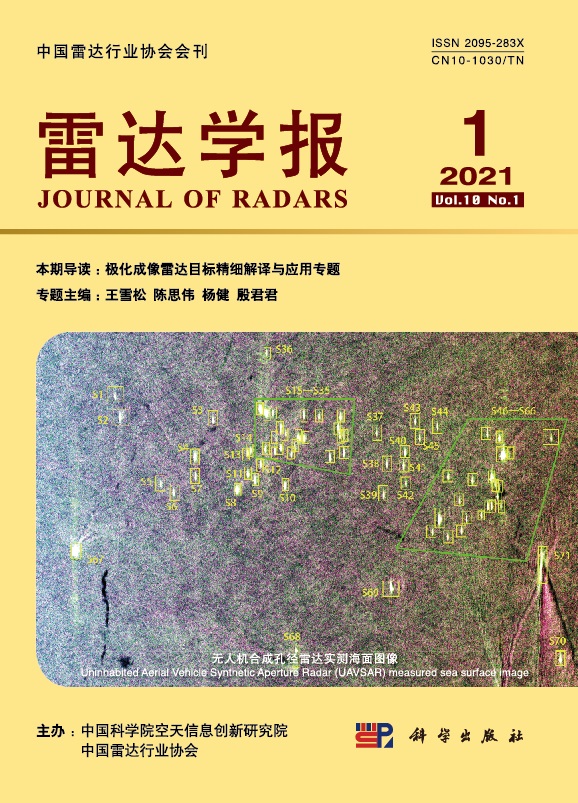

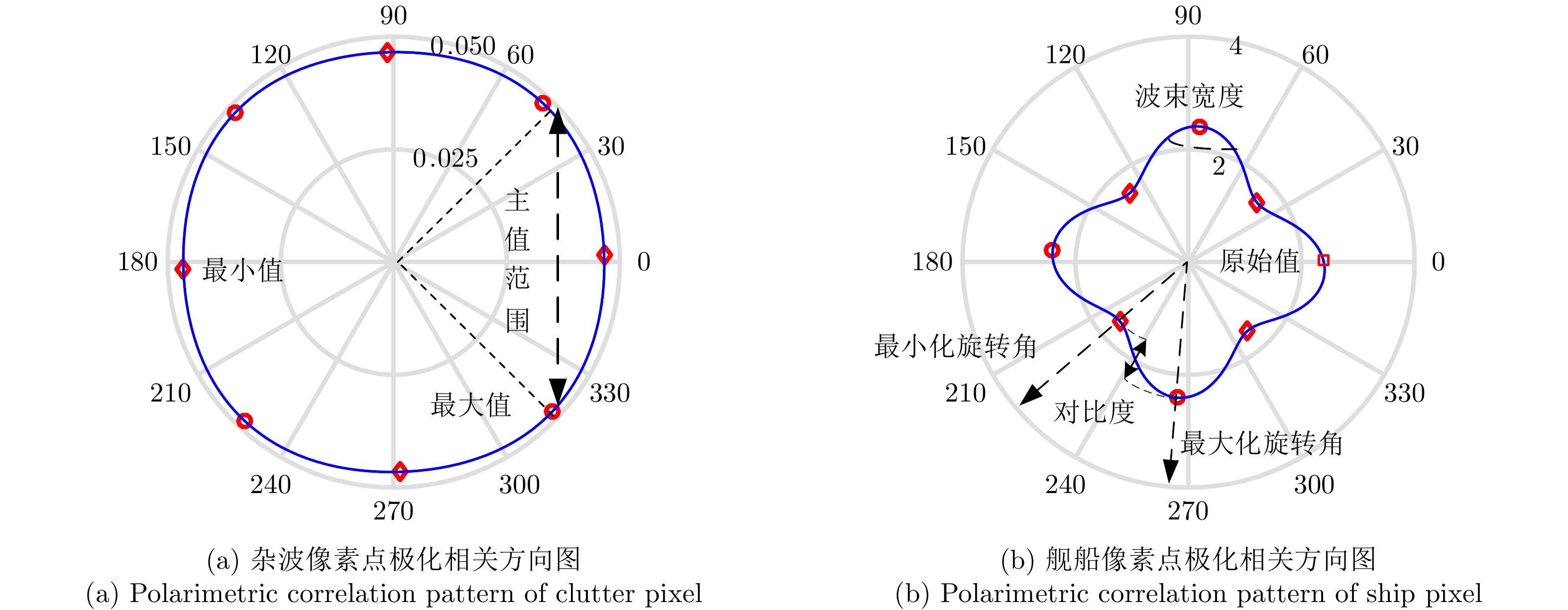



 DownLoad:
DownLoad:






